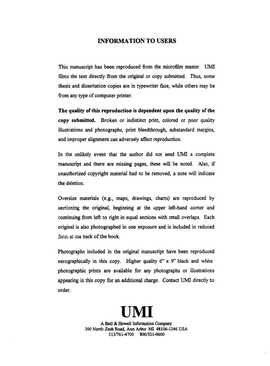| dc.contributor.advisor | Thompson, Gary, | en_US |
| dc.contributor.author | Benfield, Richard William. | en_US |
| dc.date.accessioned | 2013-08-16T12:30:05Z | |
| dc.date.available | 2013-08-16T12:30:05Z | |
| dc.date.issued | 1998 | en_US |
| dc.identifier.uri | https://hdl.handle.net/11244/5663 | |
| dc.description.abstract | This reversion is a cause for concern for the future as such a reversion is not oriented to either a national or international economic system. | en_US |
| dc.description.abstract | In 1990 the Republic of Kyrgyzstan became an independent nation. Prior to 1990 it had experienced a long and varied political and cultural history, most recently as a republic of the Soviet Union, but prior to that as an important region along the Silk Road between Asia and the Mediterranean. In 1990, upon independence, it embarked upon a program of decollectivisation, privatization and transformation to a market economy. To date, academic research has focussed on the transformation in the context of differing economic systems and changes in political hegemony. In this study the effects of cultural traits and habits are posited as the major influences on geographical landscape change. To investigate whether this is so, the factors that influence the cultural development of Kyrgyzstan were examined for one oblast, Ysyk-Kul Oblast. These include historical development and organization, changing land use, demographic trends and characteristics, changing land tenure, and current and residual visual landscape elements. It is suggested that there were four major periods of cultural influence, each separated by a major cultural paradigm shift. These were traditional Kyrgyz culture, Russian settlement, Soviet hegemony and independent Kyrgyzstan. | en_US |
| dc.description.abstract | It was found that in the current land use and resultant landscape there is evidence of a number of processes that can best be explained by cultural forces and factors acting in the landscape. Moreover there is evidence that as a result of the last period of decollectivisation, privatization and change to a market economy there is the reversion to earlier cultural traits. Most noticeably, as a result of this external stress, there is a trend toward historic livestock breeds, long lot systems of land tenure and cultivation, the choice of subsistence crops such as the potato, and farm organization along cultural (patriarchal) and tribal divisions. | en_US |
| dc.format.extent | xvii, 325 leaves : | en_US |
| dc.subject | Land use, Rural Kyrgyzstan Issyk-Kul | en_US |
| dc.subject | Geography. | en_US |
| dc.subject | History, Asia, Australia and Oceania. | en_US |
| dc.subject | Issyk-Kul' (Kyrgyzstan : Lake) | en_US |
| dc.subject | Social evolution. | en_US |
| dc.title | Evolution of the rural landscape of Ysyk-Kul Oblast, Republic of Kyrgyzstan. | en_US |
| dc.type | Thesis | en_US |
| dc.thesis.degree | Ph.D. | en_US |
| dc.thesis.degreeDiscipline | Department of Geography and Environmental Sustainability | en_US |
| dc.note | Major Adviser: Gary Thompson. | en_US |
| dc.note | Source: Dissertation Abstracts International, Volume: 59-07, Section: A, page: 2660. | en_US |
| ou.identifier | (UMI)AAI9839797 | en_US |
| ou.group | College of Atmospheric & Geographic Sciences::Department of Geography and Environmental Sustainability | |
